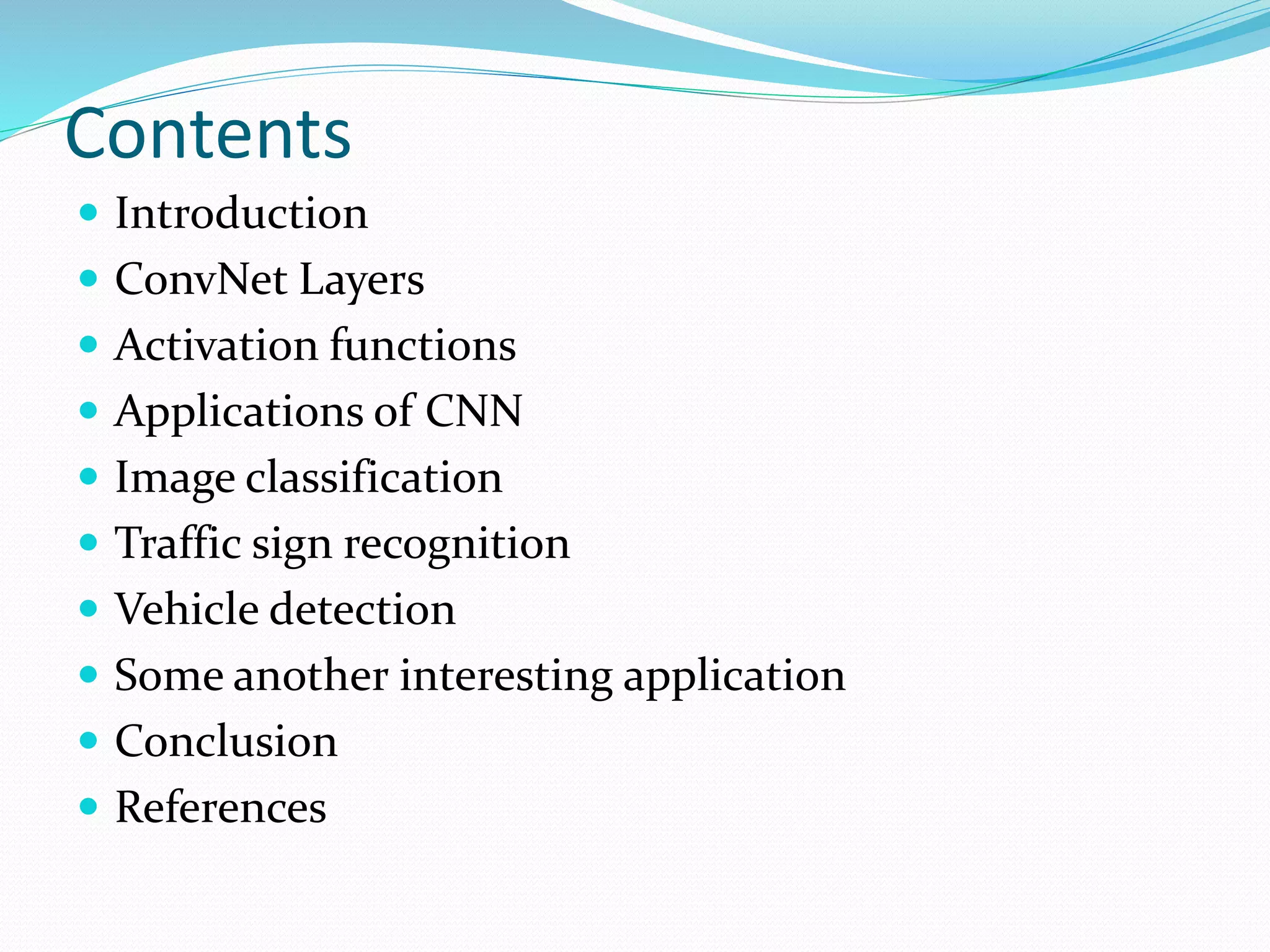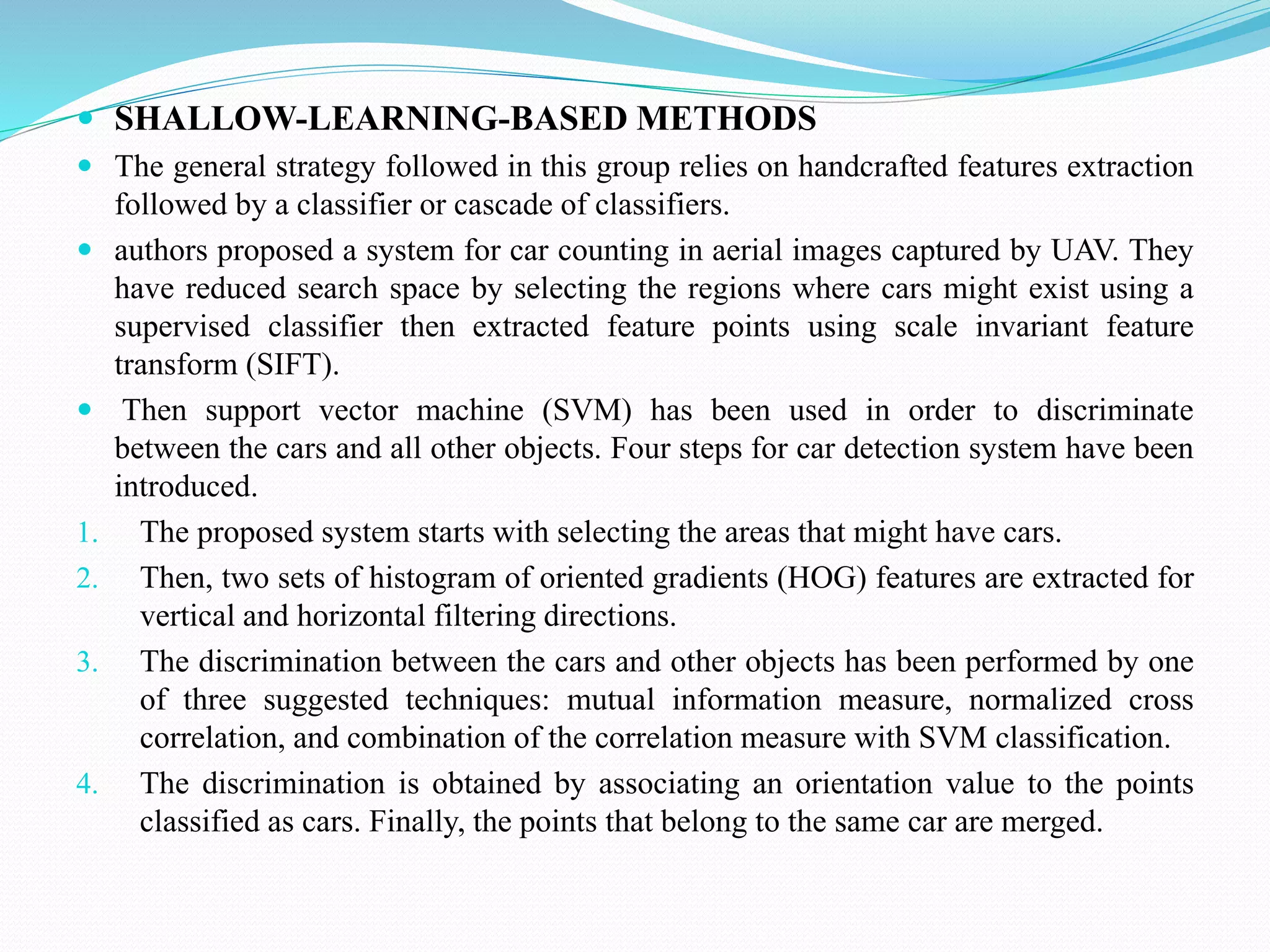The document describes a vehicle detection system using a fully convolutional regression network (FCRN). The FCRN is trained on patches from aerial images to predict a density map indicating vehicle locations. The proposed system is evaluated on two public datasets and achieves higher precision and recall than comparative shallow and deep learning methods for vehicle detection in aerial images. The system could help with applications like urban planning and traffic management.




























![ After converting RGB color space into HSV color space the CNN is applied as a
model.
It is fairly simple and has 7 layers: 3 convolutional layers, 3 maxpooling layers for
feature extraction and one fully connected layer as a classifier. The CNN was trained
to recognize two classes: traffic sign / no traffic sign. For that, we merged two
datasets: the GTSRB dataset and 30,000 random samples of the Cifar-10 dataset
After classifying the extracted ROIs, we apply a second CNN with same architecture
of the first one, to recognize the detected traffic signs in the ROIs.
FAST R-CNN BASED APPROACH
Fast R-CNN was proposed to fix the disadvantages of R-CNN [28] and SPPnet,
while improving their speed and accuracy. The Fast R-CNN method has several
advantages:
1. Higher detection quality than R-CNN, and SPPnet,
2. Training is single-stage, using a multi-task loss.
3. No disk storage is required for feature caching.
4. Training can update all network layers.](https://image.slidesharecdn.com/cnnbyketaki-180802090651/75/CNN-and-its-applications-by-ketaki-29-2048.jpg)



















![References
[1]Samer Hijazi, Rishi Kumar, and Chris Rowen, IP Group, Cadence,”Using
Convolutional Neural Networks for Image Recognition”.
[2]Neena Aloysius and Geetha M,” A Review on Deep Convolutional Neural
Networks”, International Conference on Communication and Signal Processing,
April 6-8, 2017, India.
[3]Keiron O’Shea1 and Ryan Nash2,” An Introduction to Convolutional Neural
Networks”
[4] Kaoutar Sefrioui Boujemaa, Afaf Bouhoute, Karim Boubouh and Ismail Berrada,”
Traffic sign recognition using convolutional neural networks”, 2017 International
Conference on Wireless Networks and Mobile Communications (WINCOM).
[5] SHIN-JYE LEE, TONGLIN CHEN, LUN YU, AND CHIN-HUI LAI,” Image
Classification Based on the Boost Convolutional Neural Network”, Digital Object
Identifier 10.1109/ACCESS.2018.2796722.
[6] HILAL TAYARA, KIM GIL SOO , AND KIL TO CHONG ,“Vehicle Detection and
Counting in High-Resolution Aerial Images Using Convolutional Regression Neural
Network ”, Digital Object Identifier 10.1109/ACCESS.2017.DOI.](https://image.slidesharecdn.com/cnnbyketaki-180802090651/75/CNN-and-its-applications-by-ketaki-49-2048.jpg)
